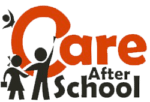Research
- General Research (46)
- High School Research (10)
This report, developed by the National Center for Education Statistics, contains statistics that address important aspects of the lives of youth, including family, schooling, work, community, and health. The report focuses on American youth and young adults 14 to 24 years old, and presents trends in various social contexts that may relate to youth education and learning.
The past year presented the afterschool community with many obstacles, most notably the economic crisis, but also many opportunities for growth. The year 2008 saw the celebration of ten years of 21st CCLC, one of the largest Lights On Afterschool rallies ever was held, and the Afterschool Alliance published the stories of so many whose lives have been transformed by afterschool in America’s Afterschool Storybook.
In 2007, funding for 21st Century Community Learning Centers increased for the first time since 2002. New research and polls show enduring and far-reaching support. More community leaders and policy makers are pledging their support for afterschool, and new dedicated state level funding streams are cropping up across the country. These positive developments, and more, as well as critical challenges that remain, are discussed in “2007 Afterschool Year in Review.” (January 2008)
This report offers a number of specific teaching techniques that research suggests will help 4th- to 12th-grade students in our nation’s schools. The report focuses on all students, not just those who display writing difficulties, although this latter group is deservedly the focus of much attention. The premise of this report is that all students need to become proficient and flexible writers. In this report, the term low-achieving writer is used to refer to students whose writing skills are not adequate to meet classroom demands. Some of these low-achieving writers have been identified as having learning disabilities; others are the “silent majority” who lack writing proficiency but do not receive additional help. As will be seen in this report, some studies investigate the effects of writing instruction on groups of students across the full range of ability, from more effective to less effective writers, while others focus specifically on individuals with low writing proficiency.
National Center for Public Policy and Higher Education (2003).
This project began with an enigma. In surveys, the parents of Hispanic high school seniors place enormous emphasis on higher education. By significantly higher percentages than the rest of the population, the parents of Hispanic high school seniors believe that a college education is an essential prerequisite for a good job and a comfortable middle-class lifestyle. However, this desire for higher education does not translate into reality. Compared to non-Hispanic whites or African-American students, Hispanic students are much less likely to obtain higher education degrees. There is clearly a gap, in other words, between what Hispanic parents say they want for their children, and the paths those children actually follow.
This study finds that elementary students who were randomly assigned to attend the 21st Century Community Learning Centers after-school program were more likely to feel safe after school, no more likely to have higher academic achievement, no less likely to be in self-care, more likely to engage in some negative behaviors, and experience mixed effects on developmental outcomes relative to students who were not randomly assigned to attend the centers.
Digital civic engagement by young people
Rapid analysis | An overview of the latest research with a critical focus on the enablers, constraints and nature of youth civic engagement in the digital space.
This analysis presents an overview of relevant research across the topic of digital civic engagement by young people by asking about the nature and dimensions of engagement, enablers and constraints of digital civic engagement, as well examining some key considerations when supporting young people’s engagement.
Funding Insecurity Puts Afterschool Programs at Risk – An August-September 2006 survey of more than 2000 afterschool programs examining issues related to funding and accessibility. Includes state level data where available.
Released in June, Uncertain Times 2009 finds that just as children in their communities need more help, afterschool program leaders across the country say they are being forced to increase fees and reduce staffing, activities and hours to cope with budget cuts and rising costs. Nearly all respondents to a survey of afterschool programs (95 percent) say the recession is affecting their communities, with 60 percent seeing more kids going hungry or families struggling to provide food for children, and half seeing increased homelessness. Yet afterschool programs are unable to provide as much help as children need because their budgets are down. Eighty-six percent of respondents say children in their communities need afterschool care and are unable to access it.
The United States Department of Education establishes policies on federal financial aid for education, and distribution and monitoring of those funds. In addition, the department collects data of America’s schools and disseminates research. The website contains information for educators, students, parents, and administrators.
In this article published by the National Association of School Psychologists, researchers discuss how trauma affects youth and how it affects their school functioning as well as how schools can use a trauma-informed approach.
The survey, conducted online in July 2007, shows the high level of importance parents place on afterschool programs. Eight out of 10 (80 percent) parents say that their child needs a safe, positive place to go to afterschool and parents said their children want the same (82 percent). Based on responses from 603 parents, it’s clear that parents believe afterschool programs are critical in steering kids away from crime and improving academic performance and overall well-being.











